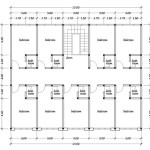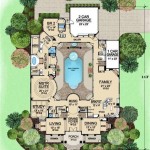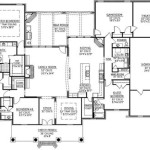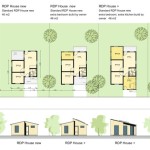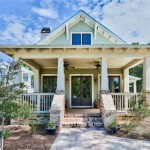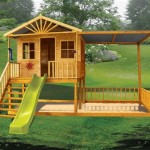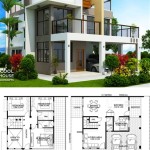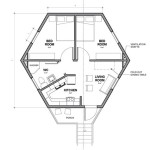Rosemary Beach Style House Plans: A Guide to Coastal Elegance
Rosemary Beach, Florida, is renowned for its distinctive architectural style, a blend of European influences, particularly Dutch Colonial, West Indies, and traditional coastal design. Houses in this community evoke a sense of timeless elegance, characterized by clean lines, natural materials, and an emphasis on outdoor living. Understanding the key elements of Rosemary Beach style house plans is essential for those seeking to replicate this aesthetic, whether building a new home or renovating an existing one.
This article provides a comprehensive overview of Rosemary Beach style house plans, exploring the signature features, materials, and design principles that define this unique architectural approach. From the iconic courtyards and balconies to the specific color palettes and landscaping choices, a detailed examination will allow a deeper understanding of how to create a home that embodies the spirit of Rosemary Beach.
Key Features of Rosemary Beach Style Architecture
Several distinct architectural elements contribute to the overall Rosemary Beach aesthetic. These features are consistently present in the majority of homes within the community and serve as hallmarks of the style. These features go beyond mere aesthetics and affect the functionality and livability of the house.
One of the most prominent characteristics is the emphasis on outdoor living spaces. Courtyards, verandas, and balconies are integral parts of the design, seamlessly connecting the interior and exterior. These spaces often feature comfortable seating areas, outdoor fireplaces, or even al fresco dining areas, encouraging residents to enjoy the mild coastal climate. The integration of outdoor spaces also serves to maximize natural light and ventilation within the home. The architectural style considers sun direction and prevailing wind patterns to create comfortable outdoor areas, even during the hotter months.
Symmetry and clean lines are also fundamental. Buildings typically feature a balanced facade, with windows and doors arranged in a predictable and aesthetically pleasing manner. This symmetry contributes to the overall sense of order and elegance that defines the style. The rooflines are generally steep and gabled, often with dormers that add architectural interest and allow for additional light and space in the upper levels. The simplicity of the lines, while seemingly understated, requires careful planning and construction to achieve the desired effect.
Finally, the restricted color palette plays a crucial role. Rosemary Beach architecture typically utilizes a limited range of muted, natural tones. White, cream, beige, and gray are common choices for exterior finishes, creating a cohesive and understated look throughout the community. Accent colors, such as soft blues or greens, are sometimes used for shutters or doors, adding a subtle touch of personality without disrupting the overall harmony. This adherence to a specific color scheme is a key element in maintaining the consistent architectural identity of Rosemary Beach. This consistent palette also serves to let the architectural details and landscaping speak for themselves.
Materials and Construction Techniques
The selection of materials is critical for achieving the authentic Rosemary Beach aesthetic. Natural and durable materials are favored, reflecting the coastal environment and ensuring the longevity of the structures. The choice of materials not only affects the appearance of the house but also its performance in the harsh coastal climate.
Wood is a primary material, used extensively for framing, siding, and detailing. Cedar shingles or clapboard siding are common choices for exterior walls, providing a classic coastal look. Wood is also used for trim, railings, and decorative elements, adding warmth and character to the buildings. The type of wood used is often treated to withstand the effects of salt air and humidity, ensuring its durability over time. This contributes to the overall sustainability of the homes, reducing the need for frequent repairs and replacements.
Stucco is another frequently used material, often employed for exterior walls and courtyards. The textured surface of stucco adds visual interest and provides a durable, low-maintenance finish. Stucco is particularly well-suited for the coastal environment, as it is resistant to moisture and salt air. The application of stucco requires skilled craftsmanship to achieve a smooth, even finish that complements the other architectural elements. Different textures and finishes can be used to create a variety of looks, while still maintaining the overall aesthetic.
For roofing, metal roofing is frequently employed due to its durability and ability to withstand harsh weather conditions. Standing seam metal roofs are a popular choice, offering a clean, modern look that complements the traditional architectural style. Metal roofing is also energy-efficient, reflecting sunlight and reducing heat gain in the summer months. The selection of roofing materials is an important consideration, as it significantly impacts the overall appearance and performance of the home. The metal roofs also provide longevity against the coastal elements.
Pavers are often used for walkways, patios, and driveways, contributing to the overall sense of elegance and sophistication. Brick or concrete pavers are common choices, providing a durable and attractive surface. The use of pavers helps to create a cohesive and inviting outdoor space, seamlessly connecting the different elements of the landscape. The patterns and colors of the pavers can be varied to add visual interest and complement the architectural style of the home. The use of permeable pavers can also contribute to sustainable landscaping practices, allowing rainwater to drain into the ground and reducing runoff.
Interior Design Principles of Rosemary Beach Style Homes
The interior design of Rosemary Beach style homes complements the exterior architecture, creating a seamless and harmonious living environment. The emphasis is on creating bright, airy, and comfortable spaces that reflect the coastal setting. The interior spaces are designed to be both functional and aesthetically pleasing, providing a relaxing and inviting atmosphere for residents and guests.
Natural light is a key element in the interior design. Large windows and doors are strategically placed to maximize natural light and provide views of the surrounding landscape. Light-colored walls and ceilings help to reflect the light and create a bright and airy feel. The incorporation of skylights can also be used to bring natural light into interior spaces that might otherwise be dark. The use of natural light not only enhances the aesthetic appeal of the home but also contributes to energy efficiency.
Neutral color palettes are also prevalent in the interior design, mirroring the exterior color scheme. White, cream, beige, and gray are common choices for walls, floors, and furniture. These neutral colors create a calming and sophisticated backdrop that allows other design elements to shine. Accent colors, such as soft blues, greens, or corals, can be used sparingly to add pops of color and personality. The careful selection of colors is essential for creating a cohesive and harmonious interior space. The use of natural textures, such as linen, cotton, and wood, can add warmth and visual interest to the neutral color scheme.
Furniture typically features clean lines and simple designs, reflecting the overall minimalist aesthetic. Comfortable and functional pieces are favored, creating a relaxed and inviting atmosphere. Upholstered furniture is often covered in light-colored fabrics, such as linen or cotton, to enhance the airy feel of the space. The selection of furniture is an important consideration, as it significantly impacts the overall comfort and functionality of the home. The use of natural materials, such as wood and rattan, can add texture and warmth to the interior design. The furniture arrangement should be carefully planned to maximize space and create a comfortable flow throughout the home.
Finally, the use of natural materials is a recurring theme in the interior design. Wood floors, stone countertops, and natural fiber rugs are common choices, adding warmth and texture to the spaces. These materials reflect the coastal environment and contribute to the overall sense of authenticity. The integration of natural materials not only enhances the aesthetic appeal of the home but also contributes to its sustainability. The use of reclaimed wood, recycled glass, and other eco-friendly materials can further enhance the sustainability of the interior design.
Understanding the elements of Rosemary Beach style house plans requires a thorough understanding of the architectural, material, and interior design principles that define this coastal aesthetic. By carefully incorporating these elements, one can create a home that embodies the timeless elegance and relaxed sophistication of Rosemary Beach.

Domin Bock Rosemary Beach Home Study Model House Design Architecture Rendering

Tour A Favorite Rosemary Beach House And More Design Chic

Coastal Vacation House In Rosemary Beach Lists For 4 2m Photos Y Pads

Tower Carriage House Rosemary Beach Vacation Al Coastal Plans Front Design

Dream Beach House Floor Plan From Watercolor Florida

Discover The Charm Of Rosemary Beach Florida

Vern Yip S Rosemary Beach Vacation Home Style Exterior Other By Marvin Houzz Au

Pin By Gin Davis On Places Beach House Exterior Dream Houses Cottage Style

Rosemary Beach Atlanta Homes And Lifestyles

Empty Nesters Florida Vacation Home Bunch Interior Design Ideas

